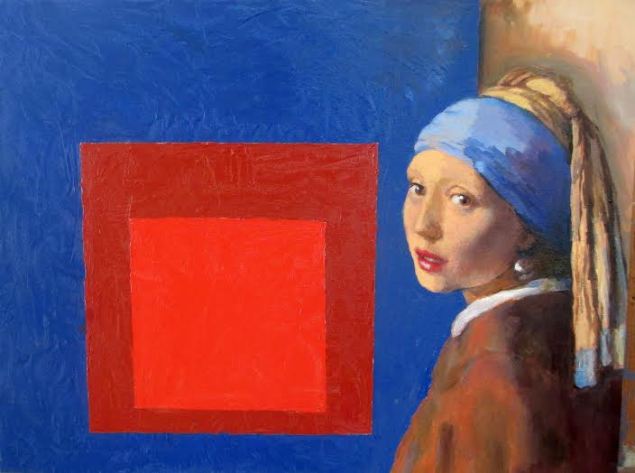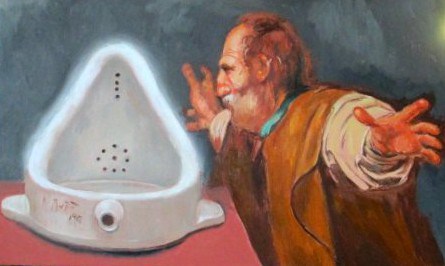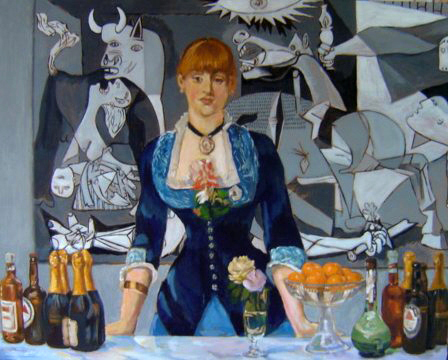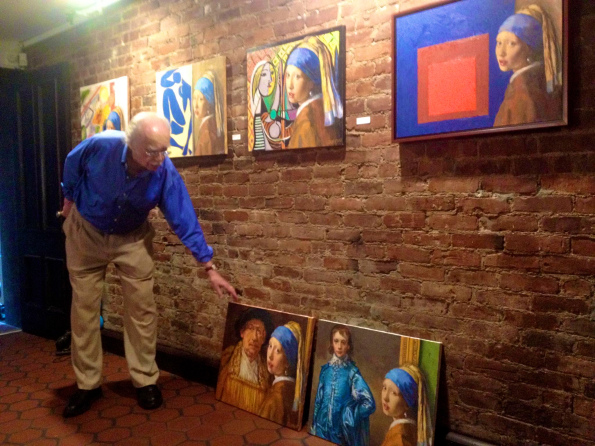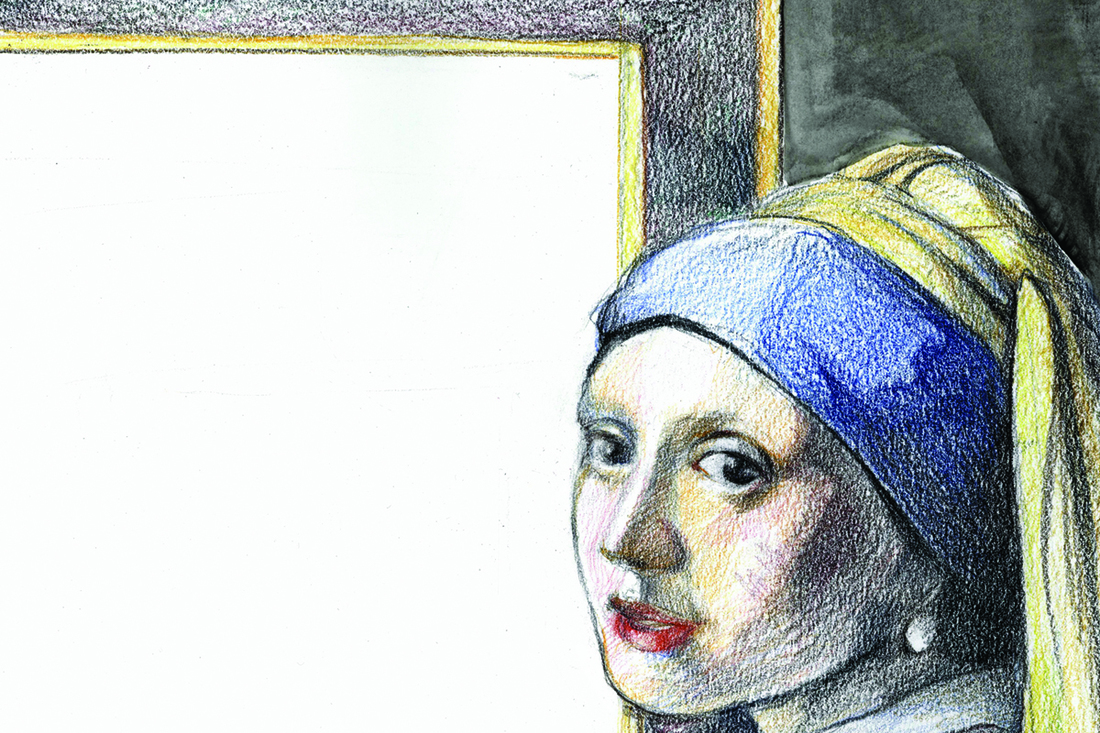A Veteran of the New York School on Mixing Abstract Art and Antiques in Her Gallery in Hyperallergic
Iconic gallerist Anita Shapolsky talks with contemporary painter, Denise Carvalho, about what makes a good exhibition.
By Denise Carvalho, June 5, 2018
Anita Shapolsky has been art-gripped since she was in college. An avid traveler, she began exploring ancient art before delving into American art. She has many interests, is a hat lover, was a belly dancer, had pet monkeys, and still enjoys Metaxa Brandy. Joie de vivre is what you feel being next to her. Her lively personality and cultivated knowledge of art is an inspiration to younger generations who have worked with her over the years.
As I walked down 65th Street towards Third Avenue in Manhattan, my eyes spotted the striking red gate of the Anita Shapolsky Gallery. I was welcomed by her assistant, Eve, and immediately introduced to Anita, who broke the ice asking if I wanted some tea. My eyes moved along the brick walls, on which hung Ernest Briggs’s vibrant and diverse abstract expressionist paintings. The gallery space is quite different from her earlier gallery in SoHo, which had seventeen foot ceilings and a lower level basement area. The current gallery has multileveled ceilings with uniquely designed rooms, brick and concrete walls on which distinct works are showcased.
The home-like space creates a dynamic sense of warmth. Anita Shapolsky has been collecting ancient art from Greece and objects from Asia, which are integrated with the paintings and sculptures she exhibits, giving her clients an art historical context for contemporary work. In the garden on the ground floor, a large Buddha made from a tree trunk shares the natural habitat with Peter Agostini’s bronze and David Hayes’s sculpture. On the second floor, one can see a nineteenth century American couch, a Persian rug, Indian and Japanese wall pieces, and a Chinese table amongst three large paintings by Ernest Briggs. After seeing this exhibition, I was stimulated by its emphasis on storytelling that speaks to a museum quality that is rare in today’s commercial gallery spaces.
When I came to visit Anita for the second time, she had a Nigerian artist, a Prince, who had heard about her and came to see the current exhibition. An emerging young artist, whose large paintings were shown at several galleries in the United States, he was greatly impressed. She referred him to her grandson, Ed Zipco, who has several galleries with younger artists under the name Superchief. Her connection with people of all walks of life is characteristic of her lively and inquisitive personality. A mother, a former teacher, and union leader, she has an uncommon history compared to today’s more entrepreneurial gallerists. After our meetings, her probing into my work, I was invited to show in the gallery’s summer exhibition. She is generous and curious and took the lead, diving right into our conversation.
* * *
Anita Shapolsky: There was an empty space on the third floor at 99 Spring St., and I decided to open a gallery with no prior experience. The first year it was very successful because all my friends and family bought the art. From then on, I was on my own. By the second year, I was looking for new artists to represent, but soon I found out that an untested gallery was not attractive for established artists. My break came when somebody told me about Martha Jackson Gallery’s artists. David Anderson, Jackson’s son, had a storage space on West 58th Street Street. After Jackson’s death, these artists were anxious to be represented by a gallery. I was given all of their information and I invited them to join my gallery. My shows began attracting many knowledgeable clients, including Dorothy Miller. Then, the gallery moved to the first floor and basement space of the building, and the gallery took off. Many recognized the quality of the artists I was representing and an array of established abstract artists came to me, including Claire Falkenstein (who insisted on telling me she wasn’t Jewish), Herman Cherry, John Hultberg, Norman Bluhm, Peter Agostini, and Philip Pavia, among others, whose works I sold. Many of these artists I still represent today.
Denise Carvalho: You held on to abstraction when other galleries were showing Minimalism, Pop Art, Hyper-realism, Neo-expressionism, and conceptual art. What attracted you to abstract art?
AS: I grew up with abstract art. The artists I represented were not young when they were exhibiting with me, which is a contrast to today’s young and untested emerging artists. Most of my artists had been in World War II and were educated under the GI Bill which subsidized them to study, travel, and exhibit in Europe. The older artists had more life experience and knowledge; many of them were art professors, philosophers, writers, and poets. In those days, artists did not have to be college graduates to teach art. Today, they need at least a graduate degree, and, there are, believe it or not, Ph.D. programs in painting. Abstract art resounded to me, and still does. There was emotion in this art. These artists listened to jazz, believed in psychology (Freudian), were well-read, experimental, and had a sense of adventure and inquiry. They were more communal, supportive of each other, and had The Club on 8th Street, which held discussions, and the Stable Gallery that gave them shows.
DC: It seems there is a renewal of abstract art today. How do you perceive the current world of abstract art?
AS: Abstract art is always evolving. It still resonates with artists, but most abstract art today doesn’t appear to come from the soul. It is seen more as a gestural technique, more mechanical, more fleeting, more frivolous, and not the result of inner struggle and emotional search. The art market demonstrates that abstract art is still in the forefront of art sales, with Pollock, de Kooning, Rothko, Still, Motherwell, all first-generation abstract artists, commanding high prices. My gallery continues to support this art by focusing on second-generation abstract artists, who the auction houses are now selling well because of the dearth of good art of the 1940s, ‘50s, and ‘60s. The second generation of abstract artists had a strong affinity with the first generation since they showed together, knew each other, and learned from each other in their discussions at The Club and through the art magazine “It Is.” They shared their philosophies and experiences. Neither generation wanted to be political or sociological; instead, they chose to focus on the beauty of nature, of life, as well as their inner anxieties and different levels of consciousness. Many young artists are not interested in abstraction – perhaps they cannot think in abstract terms or they are much more interested in fantasy.
DC: It is interesting how earlier generations of artists did more than just their artwork, some of them were painters, poets, philosophers, and critical thinkers. Tell me about an important exhibition in which you brought together some of these interests.
AS: I am very much a supporter of the interaction with all arts. I showed “The Writer’s Brush,” based on the book by Donald Friedman, with paintings and drawings by celebrated writers, which was televised by CBS Sunday in 2006. Amongst them were William Saroyan, Tennessee Williams, Clifford Odets, William Butler Yates (the only Yates in America), Lawrence Ferlinghetti, Charles Simic, Mark Strand, Kurt Vonnegut, Marine Hong Kingston, Derek Walcott, Allen Ginsberg, Aldous Huxsley (who was legally blind), Amiri Baraka, and many, many others.
DC: What are some interesting experiences regarding your gallery and your artists?
AS: Yvonne Thomas was having a video done, and became upset because the veins in her hands were showing. She wanted to redo the entire film. John Hultberg would only come to see his own art and always wore sunglasses. Over the years we had many happenings, including an art trapeze act as part of a wall sculpture exhibit. The female trapeze artists were wearing nylon suits you could see through. It was reviewed by the New Yorker. We also had many jazz events and poetry readings. Many of my painters were difficult people to work with, as was Herman Cherry and Peter Agustini. When an art reviewer would come in, they would insult them and say, “We don’t need to be reviewed.” They would also sit next to the telephone and rudely interrupt the phone calls from art magazines so they would stop bothering them.
DC: What about marginalized artists at the time? Did you represent them?
AS: We showed women along with their male counterparts over the years. The women artists I showed were Dorothy Dehner, Yvonne Thomas, Claire Falkenstein, Buffie Johnson, Mary Abbott, Louise Bourgeois, Louise Nevelson, Grace Hartigan, Elaine de Kooning, Lee Krasner, and others too numerous to name. In the fifties, Betty Parsons Gallery tried to show women and men together; the men removed their works from the gallery and went down the hall to the Sidney Janis Gallery. I was also one of the first American galleries to show Latin American and African American artists. Amongst my Latino artists were Agustin Fernandez and Mario Bencomo, both from Cuba, Fernando de Szyszlo from Peru, Pérez Celis from Argentina, José Luis Cuevas from Mexico, and the Venezuelan Oswald Vigas. The African American artists I exhibited were Herbert Gentry, Joe Overstreet, Emilio Cruz, Thomas Sills, Ed Clark, Betty Blayton, and Beauford Delany, among others.
DC: Tell me about your current show, “Ernest Briggs: Four Decades of Abstract Expressionism.”
AS: This show focuses on four decades of Ernest Briggs paintings. He was a second-generation abstract expressionist, originally from Northern California. He was a student and friend of Clyfford Still. Briggs came to New York in 1953 and soon was represented by Stable Gallery. He was later included in the 1956 show of young artists that Dorothy Miller curated at MoMA. He died in 1984 at a young age from stomach cancer. Now he is regarded as an important second generation artist. I never met him, but other artists told me about his work, and I started showing him and selling very well. I represent his estate and the rebirth of interest in his work is continuing to revitalize the abstract art world.
DC: What is the role of your foundation in Pennsylvania?
AS: We purchased a non-functioning, 1849 Presbyterian church (10,000 square feet), in the charming town of Jim Thorpe in 1985. It needed work, but it had a feeling of warmth. There are Tiffany and Lafarge windows, two hand-carved staircases, and upper- and lower-level areas for art storage. It is now called the Anita Shapolsky Art Foundation (A.S. Art Foundation). We are only open on weekends from Memorial Day through September, due to the great expense of heating such a huge building. Much of my art collection is stored there. We exhibit our collection of abstract artist and younger artists from all areas of the country. We work with the local university and museums. Our collection of abstract art surpasses any museum collection in the area. In July, we will be having an exhibition of younger, exciting artists from Superchief gallery, located in Ridgewood, Queens. The foundation serves a need in a deprived cultural area. Many of the locals have never been to a museum or even to New York City, which is less than two hours away. We have had art classes for children, which encourages their parents to visit the foundation and see good art. A much appreciated exhibit several years ago of work by Briggs, titled “Motorcycles and Large Paintings,” brought in hundreds of people. The foundation is appreciated by artists who want their work to be shown. It is also a testing ground for me to explore new talent.
DC: What are your plans for the upcoming shows? And how do you envision abstract art in a global art world?
AS: My upcoming show for the summer is called “Different Strokes,” and includes both younger and older abstract artists. The Fall show will be a very special exhibit, very different from what I have done before, a real blockbuster. It will be called “Super Bodies,” focusing on different readings of the body, realistic and abstract. We will have a Buddha, an antique gold-embroidered Greek robe, and other surprises. During the Body show, there will be a lecture by the group Compassion & Choices. They work toward changing the laws that forbid euthanasia, allowing terminally ill people to die with dignity. I find that important. I will continue exhibiting abstract art of underappreciated artists and continue to educate the public. Abstract art has been produced in Latin America, Asia and Africa, often encompassing more traditional idioms. But there is a revitalized use of different technologies and materials today.
As we were wrapping up, the surprising Anita asked me if I wanted to try her vape, a gift from her grandson. That on top of the wine we had been drinking pleasantly concluded the interview.



